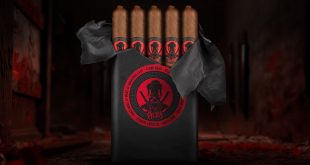How are Cigars Made – Part 1
Why are Cigars Made?
If we are thinking about how cigars are made, we should also ask why. What are the priorities of the fine cigar maker? The cigar maker really is an artist in the truest sense of the term. As much as a gourmet chef or a classical guitarist. An authentic artist has great respect for the medium they work in. The artist also aims to create more than just an end product that is merely the sum of its parts. A true artist is looking to give you a sensory experience. Experiences, by nature, engage more than one of the senses. How a cigar looks, how it smells, the ritual of cutting, toasting, lighting and puffing. That’s all part of it. Cigars made an impact from the beginning and have had centuries to evolve into what they are today. The craft today has perhaps more to do with the experience than ever before.
The Cigars Made the Experience
In a modern society where we measure attention spans in milliseconds and speed is one of the most sought-after qualities, cigar smoking refuses to conform. Smoking a cigar is a decadent, languid luxury in an all too hurried world. That’s why the experience is so important and it is why there is so much attention to detail in how cigar making. In the hours when we smoke, the cigar is on center stage. For most of us, smoking a cigar isn’t something just do absent-mindedly while engaged in a dozen different activities. Prepping and puffing the cigar is the activity. The rest of the day can fade into the background a bit. The mind quiets as we take a vacation from the worries of the day.
Think back to a treasured memory from your past. Chances are the more vivid the memory is for you, the more of your senses it involves. Recalling a great experience doesn’t just move through your mind as a series of images. You will remember how the light fell on everything around you. The temperature and the feel of the air on your skin. Layers of sounds and smells. All or most of your senses will remind you of how the experience made you feel. In making fine cigars, the experience of the person who will ultimately enjoy them is in the forefront of the creator’s mind.
Craft and Heritage
Cigar making is a generational pastime that became a rich part of family heritage. Becoming a master of your craft takes a decade or more. But, creating a craft worth mastering takes generations. Cigars made by people who love cigars smoke different because they create with the experience in mind. With time, the variety of cigar experiences has evolved in complexity. The cigars made today include everything from the pinnacle of traditional styles to exotic new innovations, like acid cigars infused with botanical extracts, such as the Drew Estate Acid Kuba Kuba Candela. Cigar culture, like the cigar itself, has many layers and components that have developed over time. Ultimately “the how” of how cigars are made is inexorably tied to the why. That covers the more esoteric aspects of cigar making, now we turn to the practical.
Cigars Made in Layers and Parts
Visualize the cigar made of several components. Each part serves a slightly different purpose. This is why different tobaccos are sought for each part. They may vary in country of origin, variety, curing and even the part of the tobacco plant the leaf comes from.
The basics are such: From end to end the cigar begins at the cap, where you make your cut. Then the shoulder and head come before we reach the band. The remainder of the cigar is the body, until we reach the end we light, where we find the foot.
The layers in a cigar made by hand are what really influence the way a cigar smokes and tastes. A properly built cigar has the slowest burning, dense tobacco towards the core with the faster burning leaves towards the outside.
In terms of layers, we have:
- Wrapper: The wrapper is your outside layer. You might say the wrapper is how a cigar introduces itself. It’s the first part we see and smell and contributes a great deal to the flavor for several reasons, one of which is obvious, it’s the part that contacts the mouth. Wrapper leaves are delicate, evenly colored and fine. Free of veins or variegation, for not only appearance, but structure and burn quality.
- Binder: Binder leaves are found beneath the wrapper and have more density and strength since they bind the filler leaves inside. The binder leaves also bundle and protect the filler leaves within from the rest of the manufacturing process so the filler maintains ideal density. Some high-end cigars use wrapper-quality leaves for the binder as well to enhance flavor.
- Filler: The filler tobacco provides most of the fuel. Great care is taken in the selection of these leaves as well and they must be expertly bunched within the binder to ensure the cigar draws well and burns evenly and in balance. Cigars made with a filler that’s bundled too tight will burn too hot. Cigars made with the filler too loose will burn unevenly. The filler itself is generally layered too, with different proportions of tobacco types from different parts of the plant (ligero, seco, volado).
Which Leaves are Cigars Made From?
In the beginning tobacco smoking was pretty simple. There wasn’t a lot attention given to flavor, much less nuances like how rapidly certain leaves burned vs. others and what effect that or anything else had on flavor. Which tobacco leaves delivered the most desirable qualities? Which part of the plant they are from, how they are cured?
Crafting a fine cigar means balancing everything from complimentary flavor notes to burning speed. Generally speaking, the slower the burn, the more flavor. It may sound counterintuitive, but in order for a cigar to draw properly, maintain structure and burn evenly, we must use tobaccos that burn at different rates. Different sections of the tobacco plant yield three distinct types of leaves with different qualities that burn at different rates. Part of the art in crafting a great cigar experience is found in knowing how and where to use each type.
Ligero, Seco and Volado
- Ligero: (pronounced “lee-HAIR-oh”) is a Spanish word for “light”. These leaves come from the top of the tobacco plant. Tobacco leaves, like most plants, ripen from the bottom up. The ligero at the top take longest to mature and are harvested last. This allows the nutrients to concentrate as the lower levels of leaves are harvested. The slower maturation process and nutrient density are what give the course, thicker extra-ripe ligero leaves their prized potent, spicy flavor notes and thick, rich smoke. Often found in the core of the filler bundle due to their slow burning qualities.
- Seco: From the broad midsection of the plant, most cigars made have a portion of seco leaves between the ligero-rich core and faster burning volado leaves. These are the thinnest leaves found in the filler and are known for their mild flavor and role in contributing to the aromatic qualities of many of the finest cigars made.
- Volado: Volado leaves come from the lower middle and bottom of the plant and come first in the order of harvesting. While every part of the cigar contributes to flavor, the role of the thinner, finer volado leaf is more function than flavor. The fastest burning of the three types, they carry the heat to the rest of the filler and ensure an even, consistent burn.
Cigars Made Tobacco Cultivation an Art Form
While tobacco has been harvested for human use for thousands of years, people did not always invest anywhere near the level of energy and attention it gets today. It likely took many years for anyone to notice the effect of using different sections of leaves from the plant. It took centuries for growers and smokers to sort that out along with the curing process. Even then, they still knew nothing about how the levels of different nutrients in the soil or pH affected flavor until centuries more.
The reason we have amazing cigars like the Padrón 1964 Anniversary Series today is because at some point, people had the luxury of time to really savor smoking tobacco. Time not just to smoke, but to think about how to curate an experience beyond just stuffing some leaves in a primitive pipe (no offense to the pipe smokers, naturally). The skill and science that developed over time and which still evolves as we speak is why cigar culture exists today.
Smoke Inn is Your Cigar Shop
Thanks for taking to time to join your favorite cigar shop in another journey into the rich tapestry of cigar culture. We hope it was as enjoyable for you to read as it was for us to write. In part two of How Are Cigars Made, we’ll delve into more about cultivation, curing and handcrafting of the cigar. If you’re local or happen to be visiting South Florida, be sure to reward yourself with a visit to one of the countries best cigar shops in person. We’d love to see you.
Our South Florida Locations:
 Smoke Inn Blog
Smoke Inn Blog



